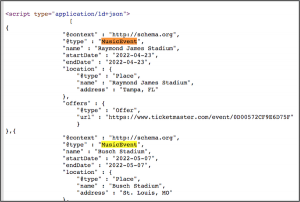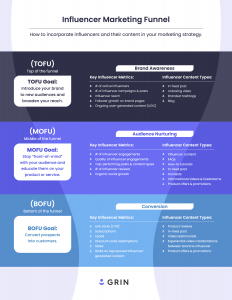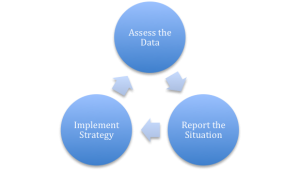
I am by no means a financial wizard. So, I was taken aback several years ago when a friend asked for some serious financial advice. He had recently received an inheritance and was looking for suggestions on what he should do with the money.
I immediately rattled off the obvious. Pay off your debt, build an emergency fund, or save the money for a down payment — in particular a car that he had been eying up. I even suggested that he take a small percentage of the inheritance and go on a weekend getaway.
I also stressed the importance of putting some of this money towards his retirement savings. After all, I told him, you’re going to need a big war chest to maintain a comfortable post-work life.
Because he received this inheritance in cash, any of the above recommendations were straightforward. For example, if he wanted to pay off a credit card, the money he received would go into his bank account. From there, here would just pay off the balance.
But, what if he had inherited these assets from a retirement account like an annuity? Well, that’s a different story. See, the inheritance process is already complicated enough. Throw in an often misunderstood insurance product like an annuity into the mix and this only gets even more complex.
That’s why it’s important to know exactly what an inherited annuity is and how it works. When you do, it won’t be as daunting. And, more importantly, this will help you accomplish your financial goals just like if you received cold, hard cash.
What is an inherited annuity?
First things first, let’s briefly define an inherited annuity.
Generally speaking, an inherited annuity isn’t a special type of annuity that’s been hidden away from like a present that your parents didn’t want to find. It’s pretty much your run-of-the-mill annuity that’s issued by an insurance or annuity company.
Here’s the catch though. You can not inherit an annuity unless the annuity type allows you to include a death benefit — which is written in the contract. This simply allows an annuity owner to leave the remaining annuity payments to a beneficiary. For the uninitiated, a beneficiary is an individual or group of individuals who can legally inherit the annuity legally.
Because different types of annuities have various payout options, not all are eligible to include a death benefit.
- Fixed-period annuity. With this type, you’ll receive guaranteed payments for a specific period of time, such as for 20-years. If the annuity owner passes away during this timeframe, the beneficiary will receive the remaining payments.
- Life annuity. As the name implies, this annuity promises lifetime payments. Don’t count on this type including survivor benefits. But, if you die during the accumulation phase and payments haven’t begun, you may be able to include a death benefit for your beneficiary.
- Joint life. This annuity guarantees lifetime payments for an individual and their spouse. If one passes away, the other will contine to receive payments. If both die, some contracts permit a third beneficiary.
- Variable. Here beneficiaries receive at least the original amount that the owner has contributed.
How inherited annuity payouts work?
Although both annuities and the inheritance process can both be complex, this is actually pretty straightforward. As long as the contract includes a death provision and the owner has named a beneficiary, you can receive an inherited annuity. If not, the payments will cease or the insurance company will keep the remaining money when the owner dies.
An annuity owner can either leave the entire annuity to one person or spread it out among several different individuals. Even a non-profit organization can be named as a beneficiary. Or, a trust can be established as a part of your estate plan.
With that out of the way, what are the inherited annuity payout options?
Lump-sum payment.
Here the beneficiary would receive a one-time payment containing the contract’s remaining value. As an example, if there is $ 350,000 remaining in a million-dollar annuity and the owner dies, you can receive the $ 350,000 in a single payment.
Non-qualified stretch distribution payments.
“Non-qualified means the annuity is not held in an IRA or another type of qualified retirement account,” explains Ken Nuss for Kiplinger. “It’s an underused planning tool, but more insurance companies are offering this option now.”
“The stretch method is a bit more complex but worth considering,” he adds. “Here, the beneficiary receives monthly, quarterly or annual payments based on his or her life expectancy.” What if there are multiple beneficiaries? Each can choose their own method.
“Since the payments are spread out, annual income tax bills are smaller,” says Nuss. “And the additional taxable income is less likely to push the recipient into a higher tax bracket than a lump-sum. The money remaining in the annuity continues to grow tax-deferred.”
Another perk? Flexibility. “The beneficiary can cancel payments at any time and receive whatever’s left as a lump sum.”
“What happens if the beneficiary dies prematurely?,” asks Nuss “For example, suppose the beneficiary’s life expectancy was 20 years, but he or she dies after just 10 years. A successor beneficiary (such as the grandchild of the original owner) can receive the balance of the remaining payments. This is a unique advantage of the stretch option.”
Five-year payments.
With this option, beneficiaries can spread withdrawals throughout a five-year span into smaller incremental payments. During the fifth year, the reaming funds can be withdrawn in one final, lump-sum payment.
Basically, this distribution splits the difference between a lump-sum payout and stretch distribution payments options. Also, if the inherited annuity is in an IRA, you have 10 years to take the funds.
Spousal distribution payments.
Some refer to this as the ‘as-is’ option. Here a surviving spouse becomes the new annuity owner. As such, they will receive the exact same payout amount and frequency as the deceased. For example, if the original annuitant was receiving monthly payments for the next 20-years, and there are 10-years remaining, the spouse will also receive monthly payments for the next 10-years.
Annuitized payments.
Many consider this the customized payment distribution option. That’s because they can choose between a single-life payout or a term-certain-only option — remember, this will be shorter than the owner’s life expectancy. So, the person who inherited the annuity can receive a guaranteed lifetime that will also spread out the tax liability.
If a non-qualified annuity is annuitized, then a portion of the payment is a return of the contributions, which is also tax-free. The other part? It’s considered as a gain and is taxable. However, the tax is not front-loaded when you annuitize.
Are there any other inherited annuity options?
If you’ve inherited an annuity, you aren’t restricted to the options listed above. While there are the most common actions you would take, there are additional strategies available. These are worth considering as they may help you save money, provide income, and increase your investment options.
1035 exchange.
Named after a provision in the Internal Revenue Code, you’re allowed, under particular circumstances, to exchange one annuity for another. And, you can do so without incurring taxes. This is worth pursuing if you want to swap out the overpriced annuity you inherited for a low-cost option or to an annuity type that fits better into your plans.
Before going any further though, double-check that the current annuity does not have any surrender charges attached. If so, you may be dishing out 10% of the annuity funds.
Roll a qualified annuity into an IRA.
If you’ve inherited a qualified annuity, you are permitted to roll it over into an inherited IRA. The reason for doing this is that IRAs typically have lower fees And, they usually have better investment options when compared to annuities.
Be aware that you’ll have 60 days to deposit these funds into your IRA if you want to avoid getting penalized. If you don’t, this will be treated as a fully taxable distribution — just like any other fund from a non-qualified annuity.
The bait and switch.
If you’re younger than 59 ½ and anticipate that you’ll need to use the inherited annuity to cover living expenses or medical costs, don’t take over the annuity just yet. If you do, you may be subject to a 10% early distribution penalty.
Instead, look for an alternative, such as the previously mentioned Stretch Provision until you’ve reached the age of 59 ½.
Disclaim the annuity.
There is also one final option. And, that’s to disclaim the annuity. That means that you can refuse the annuity and it will go to the next beneficiary in line. Be aware that you have no say in who gets the annuity if you disclaim it.
Inherited Annuity FAQs
What’s the difference between qualified and non-qualified annuities?
As a beneficiary, you can inherit two types of annuities: qualified and non-qualified.
A qualified annuity is a financial investment that’s linked to retirement plans. This includes death benefit pensions, tax-sheltered annuities, aka 403(b) plans, 401(s), and IRAs that are paid with pre-tax dollars. If you are the annuitant’s spouse, you’re allowed to roll all assets from a qualified annuity into another plan. And, you can also treat it as your own.
What if you are not a spouse? The annuity payment will be disbursed as a lump sum. But, you can also set up a separate IRA account and place the funds there once inherited.
A non-qualified annuity is an investment that’s purchased outside of a work-related retirement plan, such as an annuity. Since you’re using after-tax dollars you don’t pay any tax on the principal, or original investment amount. The reason is that these annuities have already been subject to income tax. However, any interest that’s been earned will be taxed once withdrawn. If you inherit this type of annuity you must pay taxes on the growth.
Who can inherit an annuity?
As long as your annuity contract permits it, you can name whom you like as a beneficiary. But, there are a few things to keep in mind.
First, you can choose a sole beneficiary only or name several individuals to receive a percentage of whatever remains in your annuity fund. If you have more than one child, this might make legacy planning a little easier.
Second, you are able to name anyone to be a beneficiary. You can even assign a beneficiary status to a noncharitable organization or establish a trust. But, before doing this check with your annuity issuer to see if there are any exclusions. Also, minors are not eligible to access annuity death benefits until they become legal adults.
Do I have to pay taxes on an inherited annuity?
Yep. However, how the taxes add up depends on the beneficiary and how the annuity has been structured. So, if you were the spouse and opt to continue receiving payments, this will be on a tax-deferred basis. A non-spouse who takes a lump sum will pay taxes on the interest earned on the original premium.
This can get complicated. And, the last thing you want is to get into trouble with the IRS. So, consult your tax advisor.
Can I sell an inherited annuity?
While having a guaranteed lifetime income sounds appealing, it might be in your best interest to use this money to alleviate debt or take care of an emergency. And, you can do this by selling the annuity.
You actually have two options if you decide to part with the inherited annuity.
The first is a partial sale. Here you would sell a period of the annuity disbursement or a portion of each payment. So, if you have an annuity that promises payments for the next 10 years, you could sell five years of these payments. In exchange, you’ll receive a lump sum. After those five years, you can begin or continue to receive the remaining payments.
As for selling a portion of each payment, you would get a lump sum and a smaller continual payment.
The second is selling the entire annuity contract. If you do this, you’ll get a one-time payment and that’s all she wrote.
What’s the best thing to do with an inherited annuity?
The only person who can answer that is you. As you can see, there are so many factors to take into consideration if you receive an inherited annuity. But, the best words of advice would be to examine your financial situation, take stock of your future, and listen to what your gut is telling you.
Business & Finance Articles on Business 2 Community
(84)
Report Post







